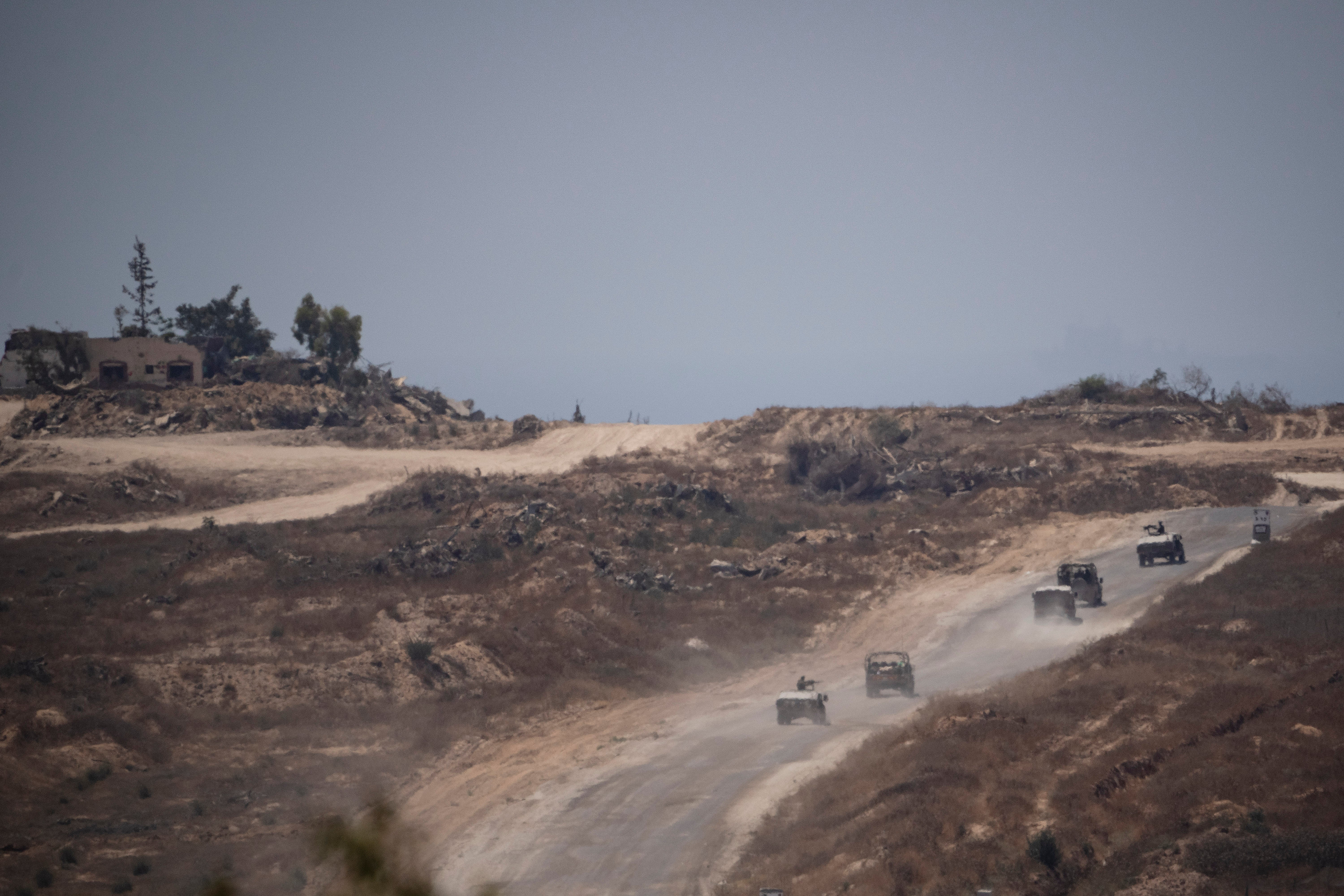UN Security Council to vote on cease-fire resolution aimed at ending the Israel-Hamas war in Gaza
The U.N. Security Council has scheduled a vote Monday afternoon on a U.S. resolution that welcomes a cease-fire proposal announced by President Joe Biden that the United States says Israel has accepted

Your support helps us to tell the story
From reproductive rights to climate change to Big Tech, The Independent is on the ground when the story is developing. Whether it's investigating the financials of Elon Musk's pro-Trump PAC or producing our latest documentary, 'The A Word', which shines a light on the American women fighting for reproductive rights, we know how important it is to parse out the facts from the messaging.
At such a critical moment in US history, we need reporters on the ground. Your donation allows us to keep sending journalists to speak to both sides of the story.
The Independent is trusted by Americans across the entire political spectrum. And unlike many other quality news outlets, we choose not to lock Americans out of our reporting and analysis with paywalls. We believe quality journalism should be available to everyone, paid for by those who can afford it.
Your support makes all the difference.The U.N. Security Council scheduled a vote Monday afternoon on a U.S. resolution that welcomes a cease-fire proposal announced by President Joe Biden that the United States says Israel has accepted. It calls on Hamas, which has said it viewed the proposal “positively,” to accept the three-phase plan.
The draft resolution urges Israel and Hamas “to fully implement its terms without delay and without condition.”
If adopted, it would be the first Security Council resolution on a cease-fire plan aimed at ending the eight-month war between Israel and Hamas in Gaza.
U.S. deputy ambassador Robert Wood told reporters Monday that the United States wanted to make sure all 15 Security Council members were on board.
The council’s scheduling of the vote Monday afternoon indicated that the resolution will likely be adopted unanimously.
Wood described the draft resolution as "the best, most realistic opportunity to bring at least a temporary halt to this war.”
The conflict was sparked by Hamas’ surprise Oct. 7 attack in southern Israel that killed about 1,200 people, mainly Israeli civilians, and saw some 250 others taken hostage. About 120 hostages remain, with 43 pronounced dead.
Israel’s massive military offensive has killed over 36,700 Palestinians and wounded more than 83,000 others, according to the Gaza Health Ministry. It has also destroyed about 80% of Gaza’s buildings, according to the U.N.
The Security Council adopted a resolution on March 25 demanding a humanitarian cease-fire in Gaza during the Muslim holy month of Ramadan which ended April 9, with the U.S. abstaining. But there was no halt to the war.
The current draft resolution underscores “the importance of the ongoing diplomatic efforts by Egypt, Qatar and the United States aimed at reaching a comprehensive cease-fire deal, consisting of three phases.” U.S. Secretary of State Antony Blinken is on his eighth trip to the Middle East since Oct. 7 pursuing that goal.
Biden’s May 31 announcement of the new cease-fire proposal said it would begin with an initial six-month cease-fire with the release of hostages in exchange for Palestinian prisoners, the withdrawal of Israeli forces from populated areas in Gaza and the return of Palestinian civilians to all areas in the territory.
Phase one also requires the safe distribution of humanitarian assistance “at scale throughout the Gaza Strip,” which Biden said would lead to 600 trucks with aid entering Gaza every day.
In phase two, the draft resolution says that with the agreement of Israel and Hamas, “a permanent end to hostilities, in exchange for the release of all other hostages still in Gaza, and a full withdrawal of Israeli forces from Gaza” will take place.
Phase three would launch “a major multi-year reconstruction plan for Gaza and the return of the remains of any deceased hostages still in Gaza to their families.”
The resolution's final draft would underline that the proposal says if negotiations take longer than six weeks for the first phase, “the cease-fire will still continue as long as negotiations continue." It would welcome “the readiness of the United States, Egypt and Qatar to work to ensure negotiations keep going until all the agreements are reached and phase two is able to begin.”
The final draft rejects any attempt to change Gaza’s territory or demography, or reduce its size, but drops wording that specifically mentioned the reduction by officially or unofficially establishing “so-called buffer zones.”
It also would reiterate the Security Council’s “unwavering commitment to achieving the vision of a negotiated two-state solution where two democratic states, Israel and Palestine, live side by side in peace within secure and recognized borders.”
And it would stress “the importance of unifying the Gaza Strip with the West Bank under the Palestinian Authority.” This is something Israeli Prime Minister Benjamin Netanyahu’s right-wing government has not agreed to.
___
Follow AP’s coverage of the war in Gaza at https://apnews.com/hub/israel-hamas-war